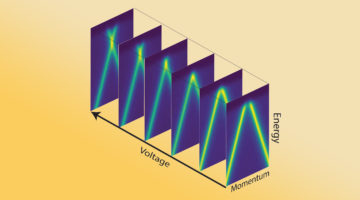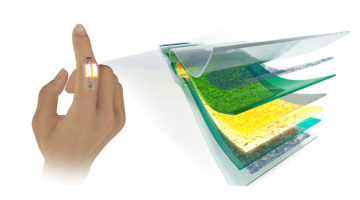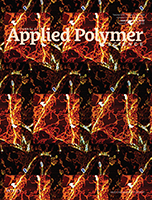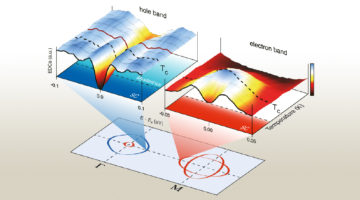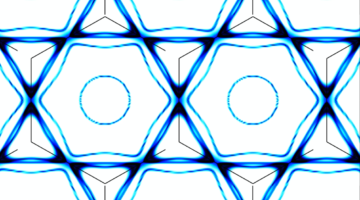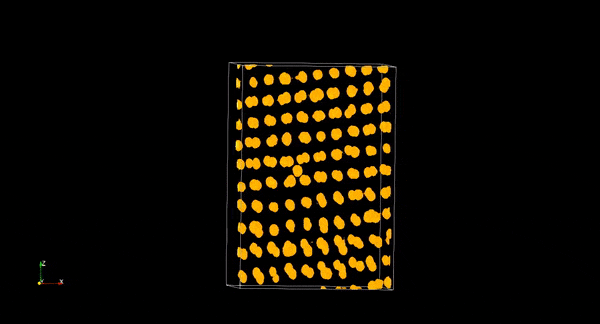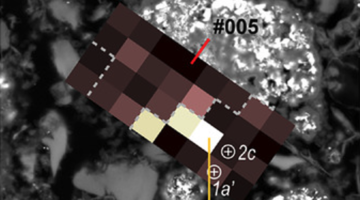Using the ALS, researchers determined that interactions between electrons are what give rise to the divergent effects observed when graphene is doped with electrons versus holes. A better understanding of this electron–hole asymmetry could lead to new avenues for generating exotic material phases, including unconventional superconductivity. Read more »![]()
![]()
Scientists Uncover Surprising New Clues to Exotic Superconductors’ Superpowers
Researchers studied a model material (CeCoIn5) that mimics a cuprate superconductor that can be switched on and off using high magnetic fields. In chemical compositions where the superconductivity is strongest, the number of free electrons jumps, signifying a transition point. The researchers attributed this transition to the behavior of electrons associated with the cerium atoms. Read more »
A Brighter Future for Stretchable Electronics
By continuously monitoring physiological signals, wearable “stick-on” sensors not only help people stay healthy, they can also provide early warning of potential health problems. At the ALS, researchers studied the morphology of such a sensor’s active material, which is key to controlling and optimizing its structure and performance. Read more »
Programmable stiffness and stress–relaxation of cross-linked self-assembling peptide hydrogels
An AFM image representing a supramolecular hydrogel based on a cross-linked self-assembling peptide (SAP). Cross-linking allows for precise tuning of biomechanical properties, spanning the range of stiffness values found in the human central nervous system, pancreas, liver, lung, and skin tissues. The findings provide a new strategy helpful for soft tissue regeneration. Read more »
Interlayer Coupling Drives Mysterious Phase Transition
Researchers found that a mysterious phase transition in an iron-based superconductor is driven by interactions between the material’s 2D layers. The results counter the assumption that interlayer coupling is negligible in such materials, suggesting instead that the interactions can be an effective way to tune superconductivity. Read more »![]()
![]()
Scientists Discover ‘Secret Sauce’ Behind Exotic Properties of New Quantum Material
Kagome metals have long mystified scientists for their ability to exhibit collective behavior when cooled below room temperature. A research team has discovered that the kagome electrons’ unusual synchronicity is due to another behavior known as an electronic singularity, or the Van Hove singularity, which involves the relationship between the electrons’ energy and velocity. Read more »
With a Little Help, New Optical Material Assembles Itself
Researchers have demonstrated that tiny concentric nanocircles self-assemble into an optical material with precision and efficiency. Electron microscopy and x-ray scattering revealed the structure and spatial distribution of each ingredient in the resulting materials. The new findings could enable the large-scale manufacturing of multifunctional nanocomposites. Read more »
Hardening Effects in Superhard Transition-Metal Borides
Novel superhard materials with exciting potential for applications in cutting tools and abrasives can be designed by combining incompressible transition metals with boron to create phases like WB4, pictured here. Diamond-cell-based high-pressure radial diffraction enables the direct study of lattice specific mechanisms for hardening. Read more »
How Shark Egg Cases Balance Toughness and Permeability
Also known as “mermaid’s purses,” shark egg cases are both tough and permeable—two opposing characteristics that are necessary for the embryo’s survival. X-ray scattering at the ALS and electron microscopy helped explain how the material’s nanoarchitecture contributes to its toughness, informing future development of high-performance synthetic materials. Read more »
Unexpected Transformations Reinforce Roman Architectural Concrete
Researchers used the ALS to study binding phases in Roman architectural concrete, revealing reactions and profound transformations that contribute to long-term cohesion and durability. The findings add to our growing understanding of cementing processes in Roman concretes, informing resilient materials of the future. Read more »![]()
![]()
- « Previous Page
- 1
- …
- 6
- 7
- 8
- 9
- 10
- …
- 26
- Next Page »
